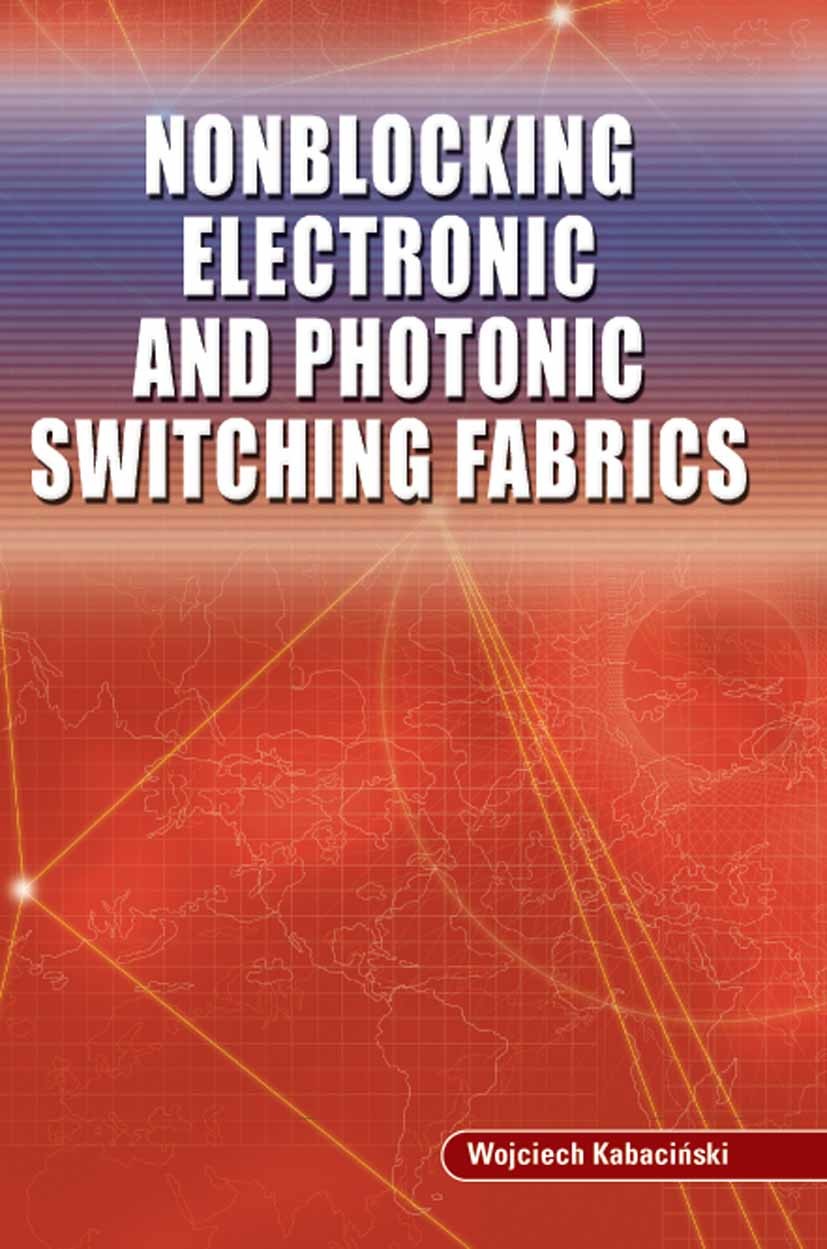| 书目名称 | Nonblocking Electronic and Photonic Switching Fabrics | | 编辑 | Wojciech Kabaciński | | 视频video | http://file.papertrans.cn/668/667173/667173.mp4 | | 概述 | Surveys recent advances in combinatorial properties of switching fabrics.Written by an expert in the area of switching fabrics.Includes supplementary material: | | 图书封面 |  | | 描述 | Switching fabrics first appeared in telephone exchanges, where there was a need to interconnect many pairs of telephones installed in the network. Due to the large number of connected subscribers and int- exchange links, switching fabrics in telephone exchanges have to serve a great number of input and output ports. Because of the scale, large switching fabrics were constructed from smaller ones. The way of building switching fabrics from elements of smaller capacity and different characteristics of switching fabrics topologies has been for a long time a rich area of theoretical research. The seminal work is due to C. Clos [23], who first considered multistage strict-sense nonblocking switching networks, and V. E. Benes [9], who first introduced the mathemati cal theory of switching networks. From that time, many research was conducted in this field. Switching fabrics found its application not only in telecommunication, starting from telephone exchanges through ATM switches and IP routers to optical cross-connect systems and optical packet switches, but also in other areas of knowledge like computation and control. Theory of switching fabrics becomes also a part of applied mathema | | 出版日期 | Book 2005 | | 关键词 | Communication networks; Control algorithms; Multicast connections; Multistage networks; Switching; Traffi | | 版次 | 1 | | doi | https://doi.org/10.1007/b137691 | | isbn_softcover | 978-1-4899-9161-4 | | isbn_ebook | 978-0-387-26530-8 | | copyright | Springer-Verlag US 2005 |
The information of publication is updating

|
|
 |Archiver|手机版|小黑屋|
派博传思国际
( 京公网安备110108008328)
GMT+8, 2025-11-11 18:40
|Archiver|手机版|小黑屋|
派博传思国际
( 京公网安备110108008328)
GMT+8, 2025-11-11 18:40


